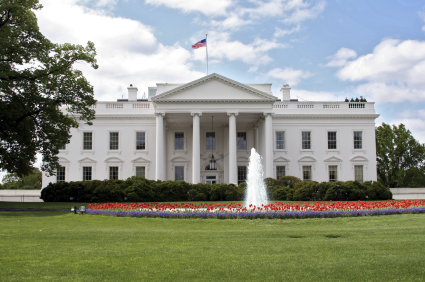
Health care reform demonstrates President Obama’s evolving understand of federalism.
There’s a common impression that key Obama administration regulatory reforms have created a power struggle between the federal government and the states. States challenging healthcare reform have portrayed that new legislation as a giant federal takeover and coercion of state governments. But that characterization misses what’s really going on.
Underlying the current challenges is a debate over whether we should have more regulation or less, not over the respective roles for federal and state government. The Obama Administration has pushed for more active government at both the state and federal levels. Moreover, new regulatory initiatives have created significant regulatory and financial opportunities for the states, potentially empowering them rather than making them weaker. To be sure, states that participate actively in the reforms will benefit more than those that don’t. Those that do, however, have a lot to gain.
Specifically, states have been given a pivotal role in implementing both of President Obama’s signature legislative accomplishments: the Patient Protection and Affordable Care Act (ACA) and the Dodd-Frank financial reform law. The provisions of the health care legislation that will have the greatest direct impact on the states are the expansion of Medicaid and the creation of state–based health exchanges. In both matters, the states stand to come out winners: The federal government’s responsibility to pay the vast majority of the costs of Medicaid expansion was a significant legislative victory for the states. So was the decision to grant the states primary authority to run the exchanges, and the states are being offered significant flexibility in how they do so.
States also gained powers under the Dodd-Frank Act. For example, Dodd-Frank created the Consumer Financial Protection Bureau (CFPB) and granted the states authority to enforce existing CFPB regulations as well as a special role in instigating CFPB rulemaking. Dodd-Frank also limited the occasions in which state regulation of national banks is preempted and protected state regulatory authority over insurance. And, in a novel move, Dodd-Frank provided that three state regulatory officials—a banking supervisor, an insurance commissioner, and a securities commissioner—would serve as nonvoting members of the new Financial Stability Oversight Council, the top federal financial regulatory entity charged with guarding against systemic risks of the kind that led to the recent financial crisis.
Although its challenge to Arizona’s immigration law has dominated the headlines, the Obama Administration has also pulled back on when federal law takes precedence over, or “preempts,” state law. The ACA allows states to add regulatory requirements consistent with federal law, and Dodd-Frank expressly limits the preemptive powers of federal financial regulators. Shortly after entering office, President Obama issued a preemption memorandum directing federal agencies to preempt state law only after a careful determination that such an act was legal and legitimate. A study commissioned by the Administrative Conference of the United States suggested that the memorandum helped curb some of the expansive preemption policies agencies had adopted during the George W. Bush Administration.
Unfortunately, continuing political battles are limiting the extent to which states are benefiting from their new powers. Political opposition to the ACA and the pending constitutional challenge to the individual mandate have led many states to slow-walk their implementation efforts—or stop them entirely. According to the National Council of State Legislatures, 17 states to date do not have legislation in place or pending that authorizes implementation of a state health exchange. Republicans’ opposition to the CFPB underlay the Senate’s recent failure to confirm Richard Cordray and his subsequent recess appointment by President Obama. Republican senators alleged that this appointment was invalid and warned that CFPB rules would likely be challenged in court on this ground. And a recent rulemaking by the Office of the Comptroller of the Currency, the federal overseer for (some say defender of) national banks, was seen by many as an effort to limit Dodd-Frank’s protections against preemption.
Still, these new legislative measures hold great potential for the states. The states have already benefited from another of Obama’s major initiatives, the stimulus bill. A little more than a third, or $282 billion, of the $787 billion in stimulus funds went to or through the states. That money was particularly targeted to help states with their K-12 education and Medicaid costs, which together make up over half of state budgets. True, these funds came with strings attached—in particular, like the ACA funding, with maintenance-of-effort requirements that prevent states from cutting back state funding or restricting who can qualify for benefits. States faced with big budget deficits may chafe at those restrictions, but their budget gaps would be much worse without this massive federal aid. And the feds have granted states substantial flexibility in other ways, including granting waivers like those being offered states now under the No Child Left Behind Act.
There are many reasons for this shift towards a greater state role in federal regulation. States have long had experience in regulating health care and protecting consumers, becoming a major source of progressive policy in these areas under the Bush administration. In addition, many Obama administration officials came from top jobs in state and local government, and thus presumably would be more than a little sympathetic to preserving state authority. Politics are also clearly a factor. While the reforms were being considered by Congress, many states lobbied to preserve their power and might have derailed the proposals had that power been gutted. And the flexibility the administration is granting the states today no doubt represents in part an effort to overcome state resistance and encourage broader participation in the administration’s reforms.
Yet also underlying the Obama reforms is an evolving understanding of the meaning of federalism. The healthcare challenge embodies a traditional view of federalism as as a set of legal protections guaranteeing the independence of states. But federalism under Obama is better defined as the sharing of regulatory authority between the federal government and the states. Whether federalism in this form translates into a meaningful power for the states will depend more on decisions of federal and state officials implementing regulatory programs than courts charting constitutional limits on the federal government.
This essay draws from the author’s recent article in the William and Mary Law Review, “Federalism Under Obama,” 53 Wm. & Mary L. Rev. 567 (2011).




